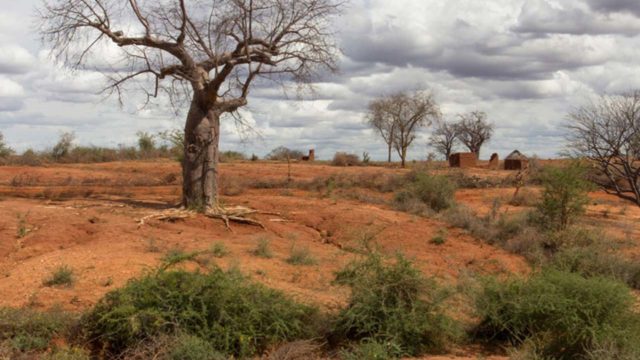Nearly half of Africa’s population could face a future of widespread drought, hunger and mass migration due to the effects of climate change – but there is still time to prevent catastrophe by restoring the continent’s drylands, said experts at Global Land Forum Africa: Restoring Africa’s Drylands.
Nigeria’s Minister of state for Environment, Sharon Ikeazor, ‘Fridays for Future’ activist, Adenike Oladosu and Chief Sintaro Mahama were among over 200 speakers, who issued a rallying call for a concerted effort to restore the world’s drylands, almost half of which are located in Africa, to protect millions of livelihoods.
Drylands are areas that suffer from high water scarcity and are especially vulnerable to land degradation. They cover over 40 per cent of the earth’s land area, host a third of all biodiversity hotspots and are concentrated in developing countries. Land degradation in drylands, known as desertification, is causing more frequent droughts, reducing crop yields and livestock productivity, threatening water and food security.
Africa’s drylands, home to 525 million people who depend primarily on rain-fed agriculture and livestock husbandry for their livelihoods, face a multitude of challenges including climate change and the economic fallout of the COVID-19 pandemic. Temperatures in the Sahel are rising 50 per cent faster than the global average and rising 50 per cent than the global average, while food prices have risen by nearly 40 per cent over the past year.
“The drylands of Africa are granaries for hundreds of millions,” said Ibrahim Thiaw, executive secretary of the United Nations Convention to Combat Desertification (UNCCD).
“The good news is that dryland degradation can be reversed, recreating more resilient and productive landscapes that will fix more carbon especially in the soil, restore ecosystem services, promote new viable enterprises, and create employment, while reducing conflicts and migration.”
Hosted by the Global Landscapes Forum, the online event brought together thousands of participants from 186 countries, including pastoralists, scientists, youth activists, restoration practitioners and the highest levels of government, and reached over 22 million people through social media.
The UN Decade will accelerate action to protect, halt and reverse the degradation of ecosystems worldwide, including grasslands and savannas, peatlands, forests, farmlands, mountains, freshwater, coastal and marine ecosystems, and urban areas.
In their recommendation, the experts agreed that local communities, as custodians and owners of the land, need to be partners in restoration efforts. “Programmes must support local knowledge and provide investment and technologies to turn local innovations into viable businesses,” Thiaw said.
UN Decade said dryland restoration will transform livelihoods only if drylands are integrated into national economic and development plans. “Local communities must be given options for their livelihoods. There will only be incentives to restore land if restoration opens up economic opportunities, especially for youth.”
“Funding is needed to help communities use the land sustainably by improving their resilience to shocks, such as droughts and other climate disasters.
“Women need to be supported in leading intergenerational dialogues in their families and clans. Land tenure policies and social norms must ensure equitable access to land regardless of gender and age,”They said.

